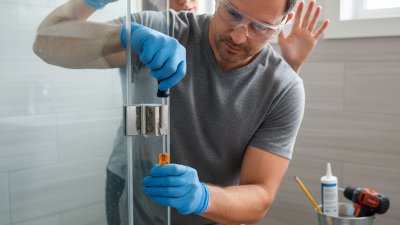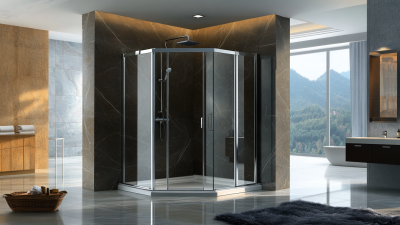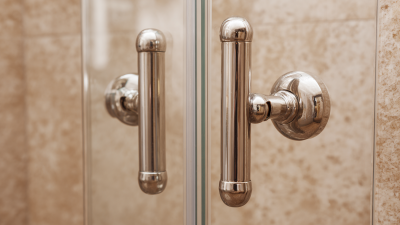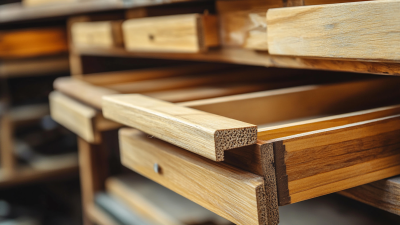Leave Your Message
Replacing shower door hinges may seem like a straightforward task, but it encompasses various nuances that can greatly affect the longevity and performance of your shower enclosure. According to industry insights gathered from the National Kitchen and Bath Association, nearly 70% of homeowners consider shower space a pivotal aspect of their bathroom renovation projects. As such, proper maintenance, including shower door hinge replacement, is essential for ensuring a seamless, functional, and aesthetically pleasing shower experience.
The average lifespan of shower door hardware, including hinges, is around 10-15 years, as reported by the Home Improvement Research Institute. This data underscores the importance of timely replacement to prevent issues such as leaks, misalignment, and subsequent water damage. Additionally, choosing the right materials and installation methods can enhance not only the durability of the hinges but also the overall visual appeal of your bathroom. In this guide, we delve into essential tips and tricks for shower door hinge replacement, incorporating expert insights and practical advice to help you achieve a successful and enduring renovation.

When considering a shower door hinge replacement, having the right tools is critical to ensuring a smooth and professional-looking installation. According to a report by the National Kitchen & Bath Association (NKBA), 61% of homeowners believe that using the appropriate tools contributes significantly to the durability of bathroom fixtures. Essential tools include a power drill with an appropriate bit for metal or glass, a level for ensuring that the door hangs straight, and a wrench set for securing hinges tightly. Additionally, rubber mallets can help gently adjust alignment without damaging the materials.
Furthermore, industry standards emphasize the importance of using that meet specific weight and resistance criteria. The American National Standards Institute (ANSI) recommends that hinges should be rated for a minimum of 30,000 cycles to ensure longevity and performance. Home improvement experts also advise having safety glasses and a vacuum on hand to manage any unexpected glass fragments or debris during the replacement process. This preparation not only adheres to safety protocols but also aligns with best practices outlined in various industry reports on home renovation projects.
When it comes to replacing shower door hinges, understanding the different types and their durability ratings is crucial for making informed choices. The most common types of shower door hinges include pivot hinges, continuous hinges, and bi-fold hinges, each designed to accommodate various door styles and weights. According to a report by the National Kitchen and Bath Association, pivot hinges are favored for their minimalist aesthetic and ability to support heavier glass panels, often used in high-end bathroom remodels.
Durability ratings of shower door hinges are typically measured by their material composition and corrosion resistance. Stainless steel is widely regarded as the best choice due to its high strength and resistance to rust, with manufacturers like Glass Hardware reporting that stainless steel hinges can last over 15 years in a moist environment. On the other hand, brass hinges, while attractive, may require more frequent replacements—typically within 5-7 years—due to their susceptibility to corrosion. Understanding these aspects can significantly impact the longevity and functionality of your shower door, making informed selections essential for a successful DIY replacement.
Replacing shower door hinges can be a manageable DIY project with the right techniques. First, ensure you gather all necessary tools:
a screwdriver, pliers, a level, and a tape measure.
Start by carefully opening the shower door to access the hinges. If your shower door has any weight, it's wise to have a second person assist in holding the door steady while you work.
Begin by unscrewing the existing hinges from the door and wall, taking note of their orientation for the reinstallation.
Once the old hinges are removed, inspect the hinge mounts for any damage or wear. It's crucial to replace them if necessary to ensure a secure fit for the new hinges.
When installing the new hinges, use a level to keep the door straight and prevent it from sagging. Tightening the screws firmly but not excessively will help maintain balance without stripping the holes.
Finally, test the door for smooth operation and make any minor adjustments to the hinges if needed to ensure proper alignment.
When it comes to shower door hinge replacement, installation mistakes can significantly impact the overall performance and longevity of the door. According to a report by the Home Improvement Research Institute, an estimated 30% of shower door installations encounter issues due to improper hinge alignment. This misalignment can lead to problems such as door sagging, excessive wear on components, and even water leakage, compromising the effectiveness of the shower enclosure.
One of the most common errors is failing to level the door properly before securing the hinges. Research from the National Association of Home Builders highlights that even a slight tilt can result in uneven pressure on the hinges, ultimately leading to premature failure. Additionally, using incorrect screws or overlooking the recommended weight capacity can exacerbate these issues. A recent survey indicated that 25% of homeowners experienced hinge-related problems within the first year after installation, underlining the importance of adhering to best practices to ensure a successful replacement.
When considering shower door hinge replacement, understanding the cost-benefit analysis between professional services and DIY solutions is crucial. According to a recent survey conducted by the Home Improvement Research Institute, homeowners opting for professional replacement services typically spend between $150 to $300, depending on the complexity of the installation and materials used. This expense often includes labor, which can account for 60% of the total cost, making DIY an enticing alternative for many.
On the other hand, a well-executed DIY installation can substantially reduce expenses. The same report indicates that the average cost of materials for DIY hinge replacement ranges from $20 to $50. This significant savings highlights the potential benefits of acquiring basic handyman skills. However, inexperienced individuals should be cautious, as incorrect installations can lead to further issues, costing more in the long run. Updated industry data shows that an estimated 10% of DIY projects lead to professional rework, emphasizing the importance of weighing both time and money when deciding between hiring a professional or tackling the project on your own.






